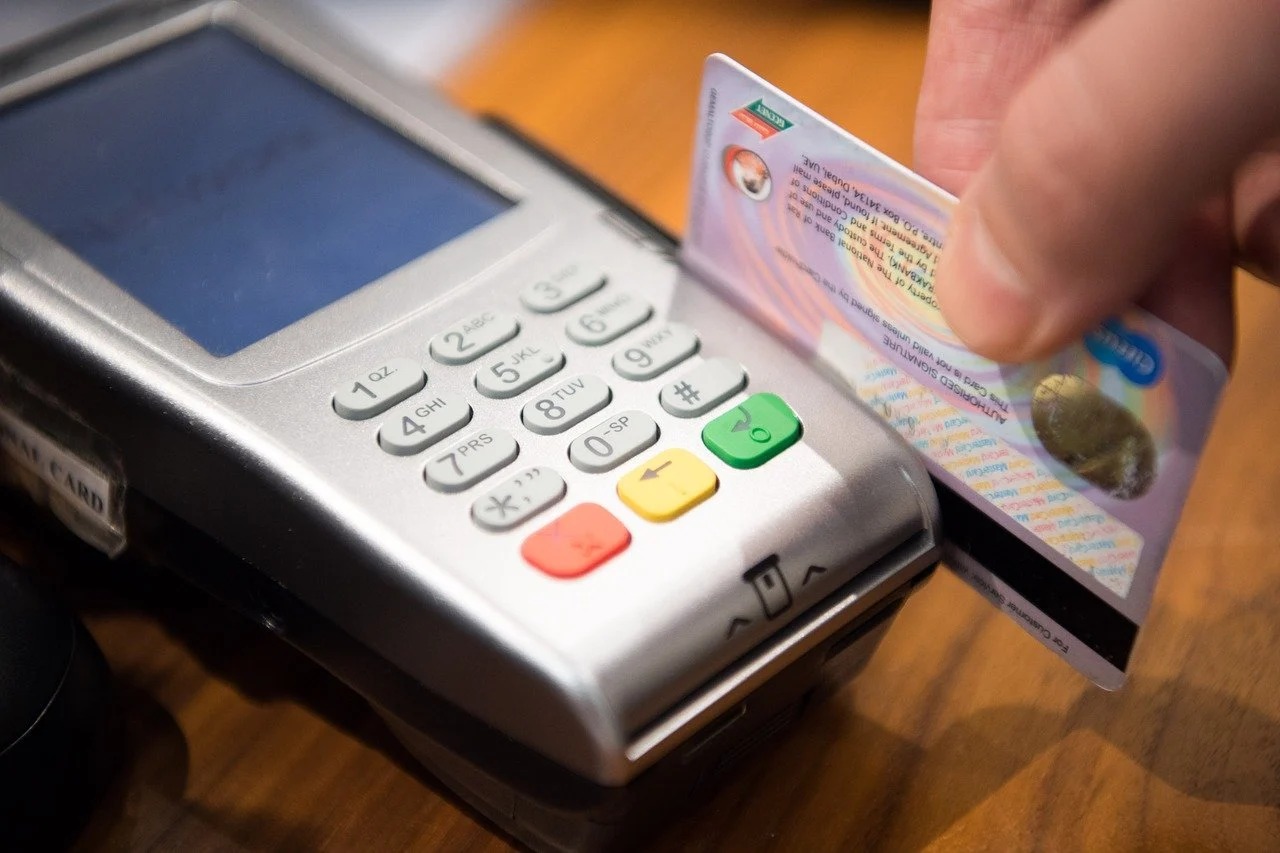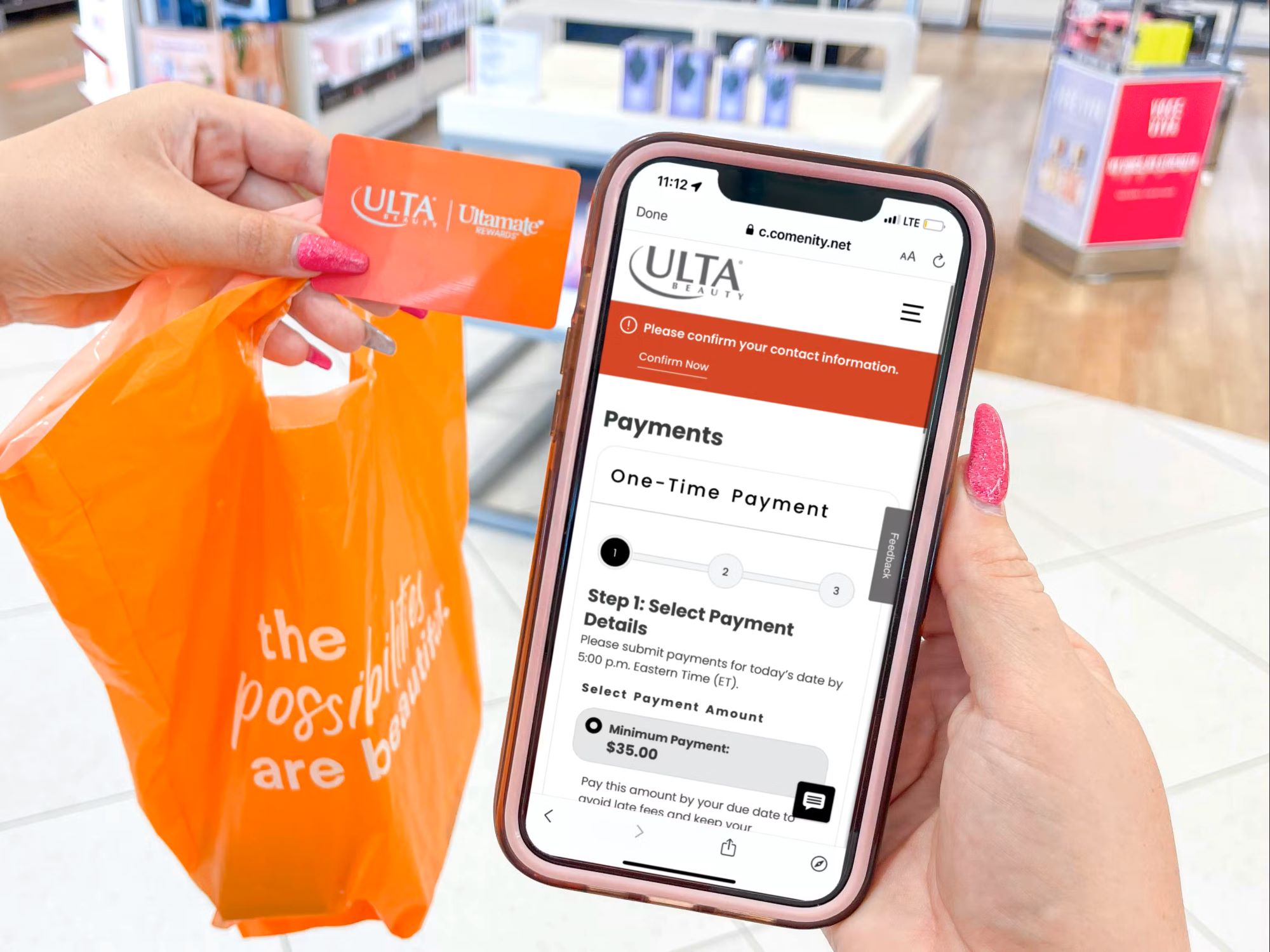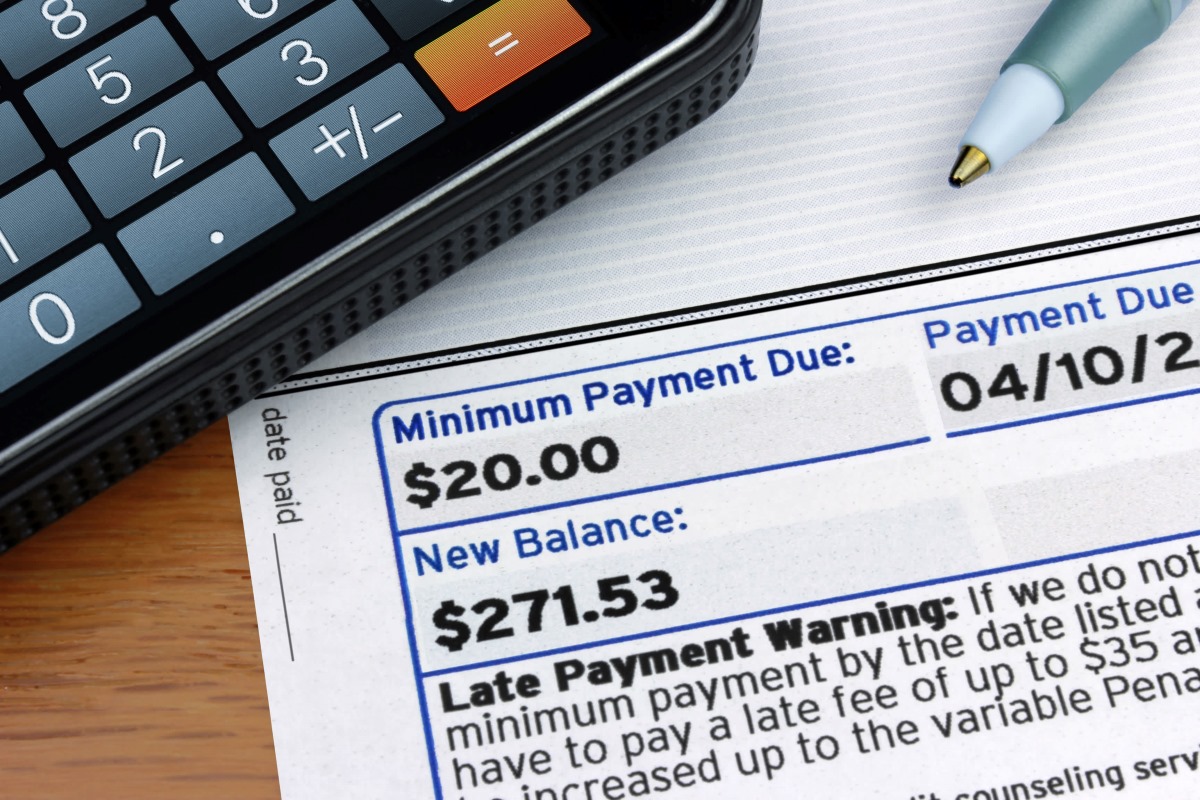Home>Finance>Can My Parents See What I Buy With Their Credit Card


Finance
Can My Parents See What I Buy With Their Credit Card
Published: November 7, 2023
Discover whether your parents can track your purchases made with their credit card and learn more about the financial implications. Find answers about parental oversight in finance.
(Many of the links in this article redirect to a specific reviewed product. Your purchase of these products through affiliate links helps to generate commission for LiveWell, at no extra cost. Learn more)
Table of Contents
- Introduction
- Understanding Parental Access to Credit Card Statements
- How Credit Cards Work and Who Can Access the Statements
- Can Parents See Detailed Purchase Information?
- Can Parents Track Online Purchases?
- Taking Precautions: How to Maintain Privacy with a Shared Credit Card
- Communicating with Parents about Credit Card Usage
- Conclusion
Introduction
As a teenager or young adult, you may have found yourself in a situation where you needed to use your parents’ credit card to make a purchase. Maybe it was for school supplies, a new pair of shoes, or even a last-minute gift. While it’s convenient to have access to a credit card, you may wonder if your parents have the ability to see what you’re buying with their card.
In this article, we will delve into the topic of parental access to credit card statements and explore the intricacies of how credit cards work. We will also discuss whether parents can see detailed purchase information and track online purchases. Furthermore, we will provide valuable insights on how to maintain privacy and communicate effectively with your parents about credit card usage.
Understanding the dynamics of credit card ownership and accountability is crucial for both parents and children. By having a clear understanding of the limitations and possibilities, you can ensure a healthy balance between financial independence and responsible spending.
So, let’s dive in and explore the interesting world of credit card usage within the context of parental oversight.
Understanding Parental Access to Credit Card Statements
When it comes to credit cards, it’s important to understand that the primary cardholder is typically the person responsible for the account. In most cases, this will be one of your parents. As the primary cardholder, they have the authority to access credit card statements and monitor transactions.
Credit card statements provide a detailed record of all the purchases made using the card. They typically include information such as the date of the transaction, the merchant’s name, the item purchased, and the amount spent. This level of detail allows the primary cardholder to have a comprehensive overview of how the credit card is being used.
However, it’s crucial to note that just because your parents have access to the credit card statements does not mean they are actively monitoring every transaction. The level of oversight may vary depending on individual circumstances and the trust and communication within the family.
In some cases, parents may choose to review the statements regularly to keep an eye on their child’s spending habits. This can be a way for them to ensure financial responsibility and offer guidance when necessary. On the other hand, some parents may trust their child’s judgment and only review the statements when necessary or in case of any suspicious activity.
It’s important to have open and honest communication with your parents about the usage of their credit card. By discussing your spending habits, financial goals, and the importance of privacy, you can establish mutual trust and understanding.
Next, we will explore how credit cards work and who can access the statements in more detail.
How Credit Cards Work and Who Can Access the Statements
Credit cards are a common form of payment that allows users to make purchases on credit. When you use a credit card, you essentially borrow money from the credit card issuer, with the understanding that you will repay the borrowed amount at a later date, usually with added interest.
Each credit card has a unique number associated with it, which is used to identify the cardholder and link the transaction to the appropriate account. When you make a purchase using a credit card, the transaction information is recorded by the merchant and sent to the credit card issuer for processing.
As mentioned earlier, the primary cardholder is typically the person responsible for the account. They are the ones who are legally bound to repay any outstanding balances on the card. As a result, they have the authority to access the credit card statements.
In addition to the primary cardholder, there may also be authorized users on the credit card account. Authorized users are individuals who have been granted permission to use the credit card for purchases, but they do not have the same level of responsibility as the primary cardholder.
While authorized users have the ability to make purchases using the credit card, they may not have direct access to the credit card statements. The primary cardholder is the one who typically receives the statements and has the ability to review the transaction history.
This means that as an authorized user, your parents may be able to see the total amount spent on the credit card, but they may not have access to the specific details of individual purchases unless they review the statements or request the information from the credit card issuer.
It’s important to have a clear understanding of your role as an authorized user and the responsibilities that come with it. By maintaining open lines of communication with the primary cardholder, you can ensure transparency and avoid any misunderstandings.
Next, we will take a closer look at whether parents can see detailed purchase information when they access the credit card statements.
Can Parents See Detailed Purchase Information?
When it comes to accessing credit card statements, the level of detailed purchase information that parents can see may vary depending on the credit card issuer and the specific account settings. Generally, credit card statements provide a summary of transactions, including the date, merchant name, and amount spent. However, they may not provide specific details about the items or services purchased.
In most cases, parents will be able to see the total amount spent on the credit card, but they may not have access to the individual itemized purchases. This means that they can see that you made a purchase at a particular store or online retailer, but they won’t necessarily know what specific products you bought.
However, it’s important to note that some credit card issuers provide more detailed transaction information on their statements. This can include additional details such as the category of the purchase, such as groceries, dining, or entertainment. These additional details can provide parents with a better understanding of how the credit card is being used.
If parents need more detailed information about a specific purchase or want to track your spending in more detail, they may need to access the credit card account online or contact the credit card issuer directly. Online account portals often provide more granular transaction information, including the specific items or services purchased.
It’s also worth mentioning that with the rise of digital wallets and mobile payment apps, some credit card statements may not provide specific merchant details for transactions made through these platforms. Instead, they may show the name of the digital wallet or app used for the transaction.
Ultimately, the level of detailed purchase information that parents can access will depend on the specific credit card account and the features provided by the credit card issuer. It’s essential to have open and honest communication with your parents about the privacy expectations and any concerns you may have regarding the monitoring of your purchase history.
Next, we will explore whether parents can track online purchases made using their credit card.
Can Parents Track Online Purchases?
With the increasing popularity of online shopping, you may be wondering if parents can track the specific online purchases made using their credit card. The short answer is that it depends on the credit card issuer and the level of access parents have to the credit card account.
If parents have access to the online account portal associated with the credit card, they may have the ability to view transaction details, including online purchases. This means that they can potentially see the websites or online retailers where you made your purchases.
Furthermore, some credit card issuers provide additional tools and features that allow parents to track and monitor online transactions. These tools may include alerts or notifications that inform parents about online purchases or can be set up to notify them when the card is used for certain categories or spending thresholds.
It’s important to note that while parents may have access to this information, it doesn’t necessarily mean they are actively tracking all online purchases. It largely depends on their level of interest and involvement in overseeing your credit card usage.
On the other hand, if parents do not have access to the credit card online account portal or have limited access, they may not be able to track online purchases in real-time. In such cases, they may have to rely on the credit card statements, which may not provide the specific website or online retailer information for each transaction.
In order to maintain privacy and respect boundaries, it’s essential to have open discussions with your parents about the expectations and limitations surrounding their ability to track online purchases. By having transparent conversations and setting clear boundaries, you can ensure that both parties understand and respect each other’s needs for privacy and oversight.
Next, we will provide some guidance on how to take precautions and maintain privacy when using a shared credit card with your parents.
Taking Precautions: How to Maintain Privacy with a Shared Credit Card
If you are using a shared credit card with your parents, it’s important to take precautions to maintain your privacy while still being transparent and responsible with your spending. Here are some steps you can take:
- Communicate openly: Have open and honest conversations with your parents about financial responsibility and the importance of privacy. Set clear expectations and boundaries regarding the level of oversight they will have and discuss how much autonomy you will have in making purchases.
- Keep personal purchases separate: Whenever possible, use your own funds or a separate payment method for personal purchases. This could include setting up your own bank account or applying for a prepaid debit card. This will help maintain privacy and prevent any potential misunderstandings when it comes to shared expenses.
- Review statements together: Schedule periodic meetings with your parents to review the credit card statements together. This can help foster trust and transparency while allowing both parties to stay informed about the credit card activity. Use this opportunity to discuss any concerns, questions, or suggestions regarding the usage of the credit card.
- Consider requesting a separate card: Depending on your age and financial situation, you may be eligible to have your own credit card with your parents as a co-signer or authorized user. This can provide you with more independence and privacy in managing your own expenses.
- Practice responsible spending: Show your parents that you can be trusted with the shared credit card by practicing responsible spending habits. Stick to a budget, prioritize needs over wants, and avoid impulsive purchases. Demonstrating financial responsibility will likely lead to increased trust and a more relaxed oversight from your parents.
- Educate yourself about credit cards: Take the initiative to learn about credit cards, interest rates, and the importance of making timely payments. By understanding these concepts, you can demonstrate your commitment to being a responsible card user and ease any concerns your parents may have.
Remember, the key to maintaining privacy while using a shared credit card is open and honest communication. By setting clear boundaries, demonstrating responsible spending habits, and discussing any concerns or issues that arise, you can strike a balance between privacy and accountability.
Finally, let’s wrap up our discussion with some tips on effectively communicating with your parents about credit card usage.
Communicating with Parents about Credit Card Usage
Effective communication is essential when it comes to discussing credit card usage with your parents. Here are some tips to help you navigate these conversations:
- Be open and honest: Approach the topic with sincerity and transparency. Clearly express your intentions, financial goals, and the reasons why you need access to a credit card. This will help your parents understand your perspective and foster trust.
- Listen to their concerns: Give your parents the opportunity to express any concerns or reservations they may have regarding your credit card usage. Actively listen to their perspective and address their concerns thoughtfully. This will demonstrate your willingness to consider their point of view.
- Set expectations: Clearly define the responsibilities and boundaries associated with using the shared credit card. Discuss spending limits, reporting obligations, and the level of oversight your parents expect to have. By setting clear expectations from the outset, you can avoid misunderstandings and potential conflicts later on.
- Discuss financial education: Emphasize your commitment to financial literacy and responsible money management. Show your parents that you understand the importance of budgeting, saving, and making informed financial decisions. This can alleviate their concerns and demonstrate your readiness for the responsibility of using a credit card.
- Provide regular updates: Keep your parents informed about your credit card activity and any significant purchases you plan to make. This can be done through regular check-ins, sharing electronic receipts, or discussing upcoming expenses. By being proactive and transparent, you can maintain open lines of communication and avoid surprises.
- Show appreciation: Acknowledge and appreciate your parents’ trust and willingness to share their credit card with you. Express your gratitude for the opportunity to learn about financial responsibility and assure them that you are committed to using the credit card wisely.
Remember, effective communication is a two-way street. Be open to compromise, show understanding, and be willing to find common ground with your parents. By fostering a healthy and open dialogue, you can build a strong foundation of trust, understanding, and support when it comes to credit card usage.
Now, let’s recap what we’ve discussed so far.
Conclusion
Navigating the world of shared credit cards with your parents requires open communication, trust, and a clear understanding of boundaries. While parents have access to credit card statements and can monitor transactions, the level of oversight may vary depending on individual circumstances and the level of trust between parents and children. It’s important to remember that just because your parents have access to the credit card statements doesn’t necessarily mean they are actively monitoring every purchase.
To maintain privacy while using a shared credit card, it’s crucial to communicate openly with your parents about financial responsibility, boundaries, and the importance of privacy. Keep personal purchases separate whenever possible, review credit card statements together, and consider requesting a separate card if appropriate. Practicing responsible spending habits and educating yourself about credit cards will help build trust with your parents.
Engaging in open and honest conversations about credit card usage with your parents will foster understanding and allow you to navigate the challenges effectively. By demonstrating your commitment to financial responsibility and staying transparent about your spending habits, you can strike a balance between privacy and accountability.
Remember, the key is to maintain open lines of communication, listen to your parents’ concerns, and show appreciation for the trust they have placed in you. By doing so, you can establish a healthy financial relationship and ensure a positive experience when using a shared credit card.
Now that you have a better understanding of parental access to credit card statements, the limitations of purchase information, and the importance of communication, you can approach the topic with confidence and navigate the world of shared credit cards responsibly.














